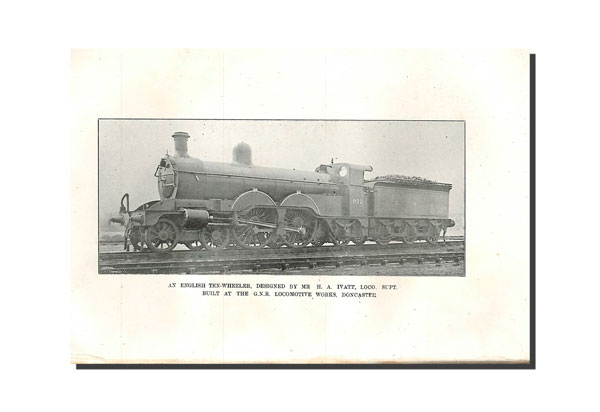Description
One of the great pleasures to be had from railway books published in the late 19th early 20th centuries is the quality of design and printing involved, which is usually, as in this case of, of a very high order. The “Railwayacs”, of the period, as they called themselves, were generally speaking a well-heeled lot, and could afford good work. “Evolution” is a pleasure to handle. Less than three-quartersof an inch thick, its over 300 pages ãre printed on a special thin coated paper, thick enough not to show “ghost” images from the reverse side, but good enough for reproduction of half – tone blocks of a quality which could only be surpassed by the expensive “photogravure” process Furthermore, publishers treated each production as an item in its own right, no nonsense about shoe-horning the book into a house style, which was often an excuse in the 50’s and 60’s for a lack of imagination, or aN exercise in penny pinching. We were glad to have them, as there was no alternative, but how boring the formula became. Full page frontispiece, in colour if you were lucky, two or three signatures of text, followed by a signature of black and white illustrations, most of them half a page or less – in the paper covered editions, often bled of the page edge – and do not get me started on so called “perfect binding”! The illustrations were seldom anywhere near the text referring to them.
G.A. Sekon, was the pen-name of George Augustus Nokes (1867-1948), who was a partner in a firm of Surveyors and Land Agents, and wrote extensively on railway matters for magazines, newspapers and technical journals on all aspects of railways. On becoming a full-time writer, he was appointed as the first editor of the Railway Magazine, but he was an argumentative and opinionated person (reflected in many of his writings) and left after an argument with the owners to start a magazine of his own. Among those he fell out with were the fantasist Clement Stretton, and the author of a similar work to his own – the “British Steam Locomotive 1825-1925” by E.L. Ahrons.
Both had a similar approach in some ways- a leisurely stroll through the early history of the locomotive, followed by a breathless gallop through the last ten or twenty years. Certainly Sekon’s book shows signs of haste, either with errors or uncorrected typos. Ahrons was in poor health, facing a deadline which no writer can ignore, and his book was completed for the press posthumously. One cause of dispute between them seems to have been the origins of the blast pipe.
Before a personal financial crisis in the late 80’s forced me to sell a number of books, I owned
a copy of “Timothy Hackworth and the Locomotive” which had belonged to E.L. Ahrons. It was full of marginal notes, including on one page in very heavy pencil “THAT EGREGIOUS B#$%&*
SEKON!!!” which would indicate little love lost between them…
For a draughtsmman’s view of the same period, see:-
For a mechanical engineers view see:-
PREVIEW BELOW – MAY TAKE A WHILE TO LOAD.

Reviews
There are no reviews yet.